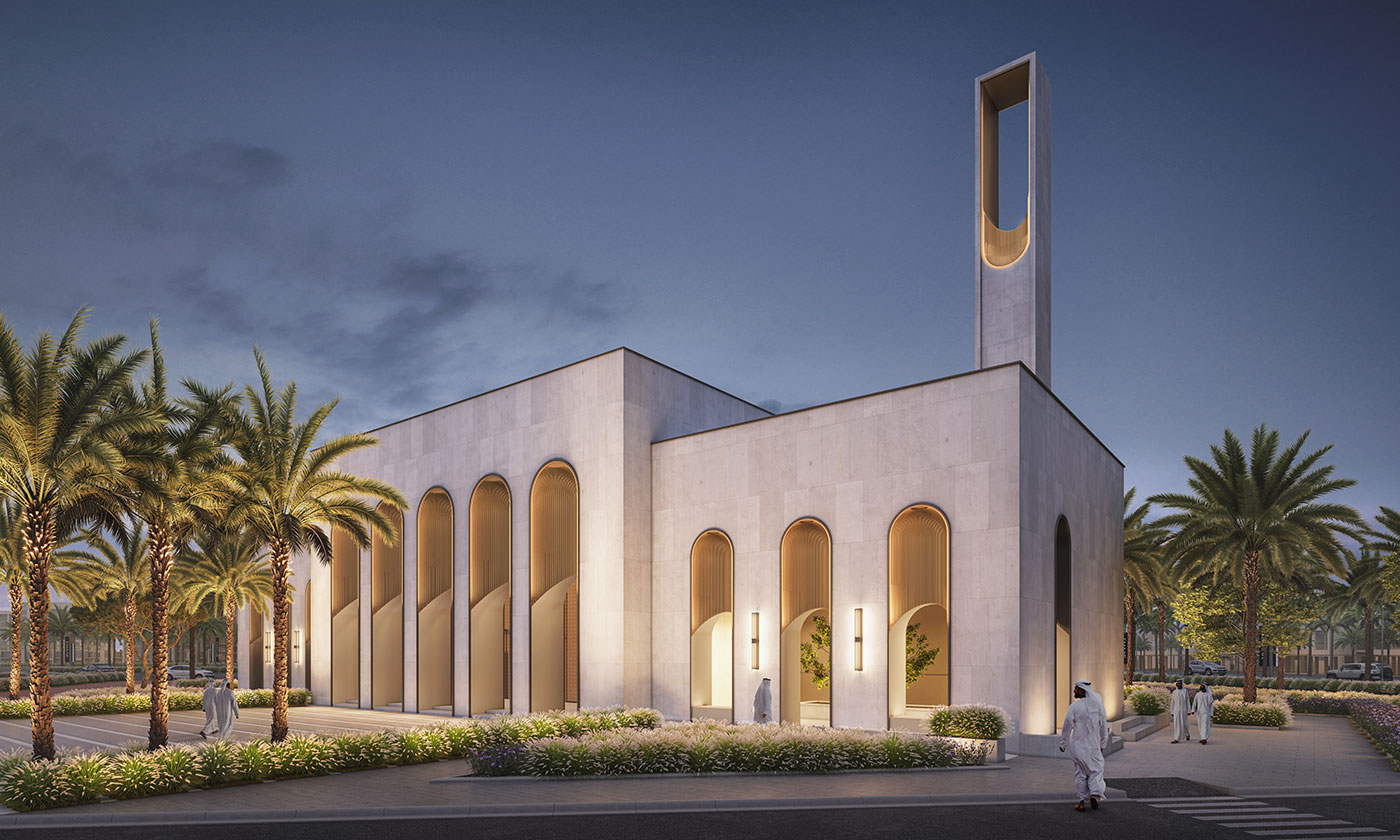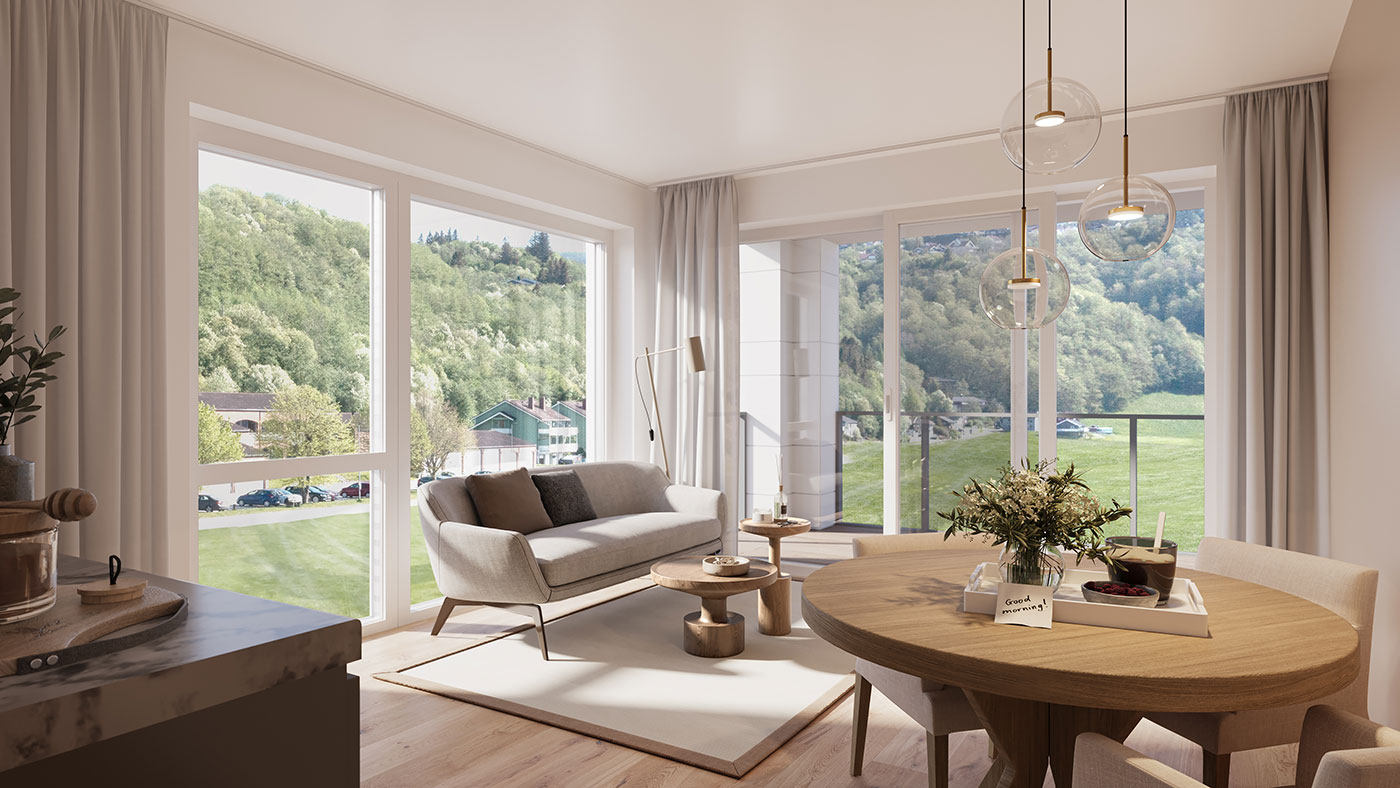Maximizing Project Potential with Expert Architecture Render Strategies

Arqsix
January 22nd, 2024

What elevates a good architectural design to a great one? It’s the power of architectural rendering. Whether it’s winning over clients, facilitating stakeholder decisions, or marketing a yet-to-be-built property, an architecture render is an indispensable part of the design process.
The Importance of Architectural Rendering
 Generated by SurferAI
Generated by SurferAI
Architectural rendering, a potent tool in the arsenal of modern architects, serves as a bridge between design ideas and their tangible realization. This visual language communicates complex architectural concepts with striking clarity, making it an indispensable tool in various sectors, including real estate, interior design, and advertising. Not only does it enhance project potential, but it also amplifies client satisfaction by providing a comprehensive understanding of the proposed architectural design.
To understand how architectural rendering impacts these sectors and contributes to their growth, we will examine its influence on real estate and property development first.
Real Estate and Property Development
In the high-stakes realm of real estate and property development, first impressions are pivotal. Architectural renderings serve as a virtual showcase, allowing potential buyers to get a sneak peek into the interior layout and exterior aesthetics of a property even before the first stone is laid. These detailed and visually appealing representations entice potential investors and clients, enabling them to envisage the potential of their investment, thereby playing a crucial role in property marketing.
The presentation of properties is revolutionized by the ability of architectural rendering to generate photorealistic 3D renders. It enables stakeholders to visualize the project from various perspectives, creating an emotional bond with prospective buyers, and effectively showcasing distinctive property attributes. Combined with the power of three-dimensional modeling software, it contributes significantly to boosting property sales, ensuring the success of architectural projects.
Interior Design and Architecture
Peeling away from the exterior, architectural rendering also shines a light on the intricate world of interior design and architecture. By facilitating the creation of lifelike architectural illustrations, it allows designers to visualize, review, refine, and communicate their architectural illustration concepts.
This transformation of abstract ideas into tangible forms enhances the level of detail and realism, critical for refining design concepts and ensuring client satisfaction.
Architectural rendering also bolsters effective communication by:
Accurately presenting design concepts to architects, designers, and stakeholders
Enabling better comprehension and assisting in the decision-making process through the review of interim outcomes and the identification of potential errors
Leveraging advanced computer software to ensure client contentment
Supporting post-project marketing endeavors
This makes architectural rendering an essential part of the success of interior design and architectural projects, including any architectural project.
Advertising and Marketing
Shifting gears to advertising and marketing, architectural rendering again makes its presence felt. By enriching marketing materials with compelling and interactive visuals, it engages the audience, immerses potential clients in the project, and effectively conveys the advantages of design ideas. It’s like having a magic wand that brings products to life, allowing potential customers to examine the product from various viewpoints and perspectives, building anticipation and curiosity around the product, and ultimately leading to heightened sales.
From the presentation of architectural designs and real estate projects to the display of interior designs, architectural renderings breathe life into marketing campaigns. These photorealistic three-dimensional images allow prospective clients to envision the completed product before the actual construction, thereby playing a significant role in the success of marketing campaigns and product launches.
Types of Architectural Renderings
 Generated by SurferAI
Generated by SurferAI
Now that we’ve discussed the significance of architectural rendering, we can move on to exploring its various types. Just as an artist uses a palette of colors to create a masterpiece, architectural rendering offers a palette of types - each serving a specific purpose in showcasing design concepts. The types of architectural rendering include:
Exterior rendering: This type of rendering focuses on showcasing the exterior of a building, highlighting its design, materials, and landscaping.
Interior rendering: This type of rendering focuses on showcasing the interior spaces of a building, including rooms, furniture, and decor.
Aerial rendering: This type of rendering provides a bird’s-eye view of the building and its surroundings, giving a comprehensive understanding of the site and its context.
From the sweeping exteriors and intimate interiors to the bird’s-eye view from the sky, every type of rendering plays a crucial role in bringing the architectural canvas to life.
These types of renderings offer a multidimensional perspective of architectural projects, allowing architects, clients, and stakeholders to view the projects from multiple angles. Whether it’s the grandeur of the exterior, the elegance of the interior, or the overview of the aerial view, each type of rendering contributes to the overall visualization of the project, providing a comprehensive picture of the architectural design.
Let’s examine each type more closely to comprehend their distinct characteristics and uses.
Exterior Rendering
 Created by Arqsix
Created by Arqsix
Exterior rendering, the first type on our palette, focuses on the building’s exterior. It serves as a window into the future, allowing clients to visualize the post-construction appearance of a building. By highlighting architectural features, materials, and the surrounding environment, it provides a comprehensive view of the project, aligning with client expectations and aiding in decision-making.
When it comes to architectural projects, first impressions count, and exterior rendering ensures that it’s a good one. By overcoming the obstacles of lighting issues, texture problems, and complex designs, exterior rendering creates a lifelike image of the building, enabling clients to make informed decisions regarding:
materials
furnishings
colors
textures
Interior Rendering
 Created by Arqsix
Created by Arqsix
Taking a step into the building, we encounter interior rendering. As the name suggests, interior rendering focuses on the inside of the building, showcasing the work of interior designers and providing a realistic view of the space. It serves to:
Optimize the design process
Convey design concepts to clients
Pinpoint potential design challenges
Facilitate essential modifications prior to construction
Ensure precise visualization of the final environment
From the layout of the furniture to the play of light, interior rendering brings the inside of a building to life, creating a connection between the viewer and the space. It is the attention to detail, from lighting to textures, that makes interior renderings feel real, allowing clients to experience the space before it exists.
Aerial Rendering
 Created by Arqsix
Created by Arqsix
Finally, we take to the skies with aerial rendering. Offering a bird’s-eye view of the project, it emphasizes the relationship between the building and its surroundings. Aerial rendering provides a comprehensive overview of the project, playing a crucial role in urban planning, marketing, and illustrating the connection between the structure and its surrounding environment.
Imagine being able to view a project from above, seeing how it fits into its environment, and understanding its scale and dimensions. Aerial rendering offers this perspective, providing clients with a holistic view of the project, and playing a critical role in decision-making. It’s like having a personal drone, allowing you to explore every nook and cranny of the project from a unique perspective.
Architectural Rendering Software and Tools
Much like a painter’s brush or a sculptor’s chisel, architectural rendering necessitates the use of specific software and tools to craft its masterpieces. These digital tools provide the canvas and colors that bring architectural concepts to life, transforming abstract ideas into photorealistic visual narratives. With the help of 3D modeling software and rendering engines, architects and designers can create detailed and accurate models of their design concepts and produce lifelike visuals.
From constructing intricate 3D models to producing photorealistic renders, these software and tools form the backbone of the architectural rendering process. To understand how 3D modeling software and rendering engines contribute to the creation of stunning architectural renderings, we will go more in-depth into their functionalities.
3D Modeling Software
3D modeling software forms the foundation of architectural rendering. It allows architects and designers to:
Create accurate and detailed models of their design concepts using specialized software
Visualize, review, refine, and communicate their design concepts
Use the 3D models as the blueprint for the final render
This software is essential for architects and designers in the architectural industry.
Whether it’s the layout of a room or the exterior of a skyscraper, 3D modeling software enables architects to bring their designs to life. It is this software that bridges the gap between concept and reality, turning abstract ideas into tangible forms that clients can see, understand, and approve.
Rendering Engines
Once the 3D model is created, it’s time for the 3D rendering engines to take the stage. These powerful tools transform 3D models into realistic visuals by simulating light, materials, and shadows. By adding these elements, rendering engines add depth and realism to the 3D model, resulting in a lifelike visual that effectively communicates the design concept.
Imagine a 3D model as a plain canvas. Rendering engines are the brushes that add color, texture, and life to this canvas, transforming it into a work of art. By replicating natural light and materials, they produce photorealistic images that look as real as a photograph.
The Architectural Rendering Process
Now that we’re familiar with the tools used, let’s examine the process of architectural rendering. Like a well-choreographed dance, the process involves several steps, each playing a crucial role in creating the final masterpiece. The steps in the process include:
Conceptualization
3D modeling
Lighting
Texturing
Each step is integral to the production of high-quality visuals that effectively communicate the design concept.
While it may seem complex, the architectural rendering process is a journey that transforms abstract ideas into tangible realities. It’s a journey that allows architects and designers to explore, experiment, and refine their designs before they become a physical reality. We’ll examine each stage of this captivating process in more detail.
Conceptualization
Every great design begins with an idea, and in architectural rendering, this idea takes shape during the conceptualization phase. This is where architects and designers understand the project’s requirements and develop a clear vision for the final render. By establishing a clear direction for the design, conceptualization serves as the foundation for all subsequent steps in the architectural rendering process.
From understanding the project’s requirements to developing a clear vision for the final render, conceptualization plays a crucial role in the success of any architectural rendering project. It allows architects and designers to explore various design possibilities, refine their ideas, and communicate their vision to clients and stakeholders effectively.
3D Modeling
With a clear concept in mind, the next step is to bring this concept to life through 3D modeling. Utilizing specialized software, architects and designers create a detailed and accurate model of their design concept. This 3D model serves as a blueprint for the final render, allowing architects to visualize, review, refine, and communicate their design concepts.
From the layout of a building to the arrangement of furniture in a room, 3D modeling allows architects to:
Create a lifelike representation of their design concept
Identify potential design challenges
Make necessary modifications
Ensure that the final render accurately represents the design concept
Lighting and Texturing
Once the 3D model is created, it’s time to add life to it. This is where lighting and texturing come into play. By simulating natural light, shadows, and materials, architects and designers can add depth and realism to their 3D models. This not only enhances the visual appeal of the render but also adds a layer of realism that makes the final output more compelling.
From the glow of sunlight filtering through a window to the texture of a brick wall, lighting and texturing play a crucial role in creating a lifelike render. By paying attention to these details, architects and designers can create a final output that not only accurately represents the design concept but also impresses clients and stakeholders.
Final Output
After all the hard work of conceptualizing, modeling, and adding lighting and texture, it’s time to reap the fruits of labor - the final design. This high-quality, photorealistic visual effectively communicates the design concept. From the glow of the lights to the texture of the materials, every detail is captured in this final output, making it a true representation of the final design.
The final output is more than just a visual representation of a design concept. It’s a tool that allows architects and designers to communicate their vision to clients, stakeholders, and the public. By presenting a lifelike portrayal of the project, the final output allows clients to grasp the aesthetics and functionality of the design, establish an emotional connection with the project, and establish clear expectations.
Tips for Successful Architectural Rendering Projects
With a solid grasp of the significance, types, tools, and process of architectural rendering, we can now delve into some insider tips for executing successful projects. From clear communication with clients and meticulous attention to detail to efficient time management, these tips can make the difference between a good project and a great one.
Whether you’re an architect, designer, or a client, these tips can help you navigate the complex world of architectural rendering. By understanding these tips and implementing them in your projects, you can ensure high-quality outputs that accurately represent your design concepts and impress your clients.
Communication with Clients
One key element that can make or break an architectural rendering project is communication. Clear and concise communication with clients is crucial for understanding their requirements, conveying the design concept, and ensuring their satisfaction. By creating an open line of communication, architects and designers can ensure that everyone is on the same page, preventing costly mistakes and misunderstandings.
At Arqsix, we recognize the significance of transparent communication. That’s why we’ve launched a new platform on our site that allows clients to draw on renders, access past and current projects, and see project timelines. This platform not only enhances our communication with clients but also ensures that they are actively involved in the design process, leading to more successful outcomes.
Attention to Detail
Another crucial factor in successful architectural rendering projects is attention to detail. From the layout of a room to the texture of a material, every detail matters in architectural rendering. By paying close attention to these details, architects and designers can create lifelike renders that accurately represent the design concept and impress clients.
At Arqsix, we value the importance of meticulous details. That’s why our 3D modelers are highly skilled and capable of bringing any ideas or visions to life in virtual reality. By paying meticulous attention to detail, we ensure that our architectural renderings are not only accurate but also visually stunning.
Time Management
The final key to successful architectural rendering projects is efficient time management. By meeting deadlines and delivering high-quality outputs on time, architects and designers can ensure client satisfaction and project success. Efficient time management not only keeps the project on track but also allows for timely revisions and adjustments, ensuring the final output accurately represents the design concept.
At Arqsix, we know how crucial efficient time management is. By leveraging technology, minimizing distractions, and maintaining a healthy work-life balance, we ensure that our architectural rendering projects are completed on time, every time.
Key Takeaways
Architectural rendering significantly enhances visualization and client satisfaction by providing photorealistic previews of proposed designs in sectors such as real estate, interior design, and marketing.
There are multiple types of architectural renderings, including exterior, interior, and aerial, each offering a different perspective and serving unique purposes in project planning and visualization.
Effective architectural rendering relies on a carefully choreographed process involving conceptualization, detailed 3D modeling, and the application of lighting and textures, backed by sophisticated software and tools.
Summary
Architectural rendering is a powerful tool that has revolutionized the world of architecture, transforming abstract design concepts into photorealistic visual narratives. Through its various types, such as exterior, interior, and aerial renderings, it provides a multidimensional perspective of architectural projects. With the aid of advanced software and tools, it allows architects and designers to create detailed 3D models and produce lifelike visuals.
Whether you’re an architect, designer, or a client, understanding the importance, types, tools, and process of architectural rendering can help you navigate this complex world. By implementing the tips for successful projects, you can ensure high-quality outputs that accurately represent your design concepts and impress your clients. As we have seen, architectural rendering is not just a tool; it’s a game-changer, transforming the way we conceive, design, and present buildings.
FAQs
Our location
Ready to share your expertise?
We welcome submissions from talented writers and experts in various fields who are passionate about sharing their knowledge and insights with our audience.
Write for UsArqsix - Shaping Stories, Shaping Spaces
Elevating real estate marketing for a world that’s always evolving.
2025 © Arqsix. All Rights reserved. |Sitemap|Privacy Notice